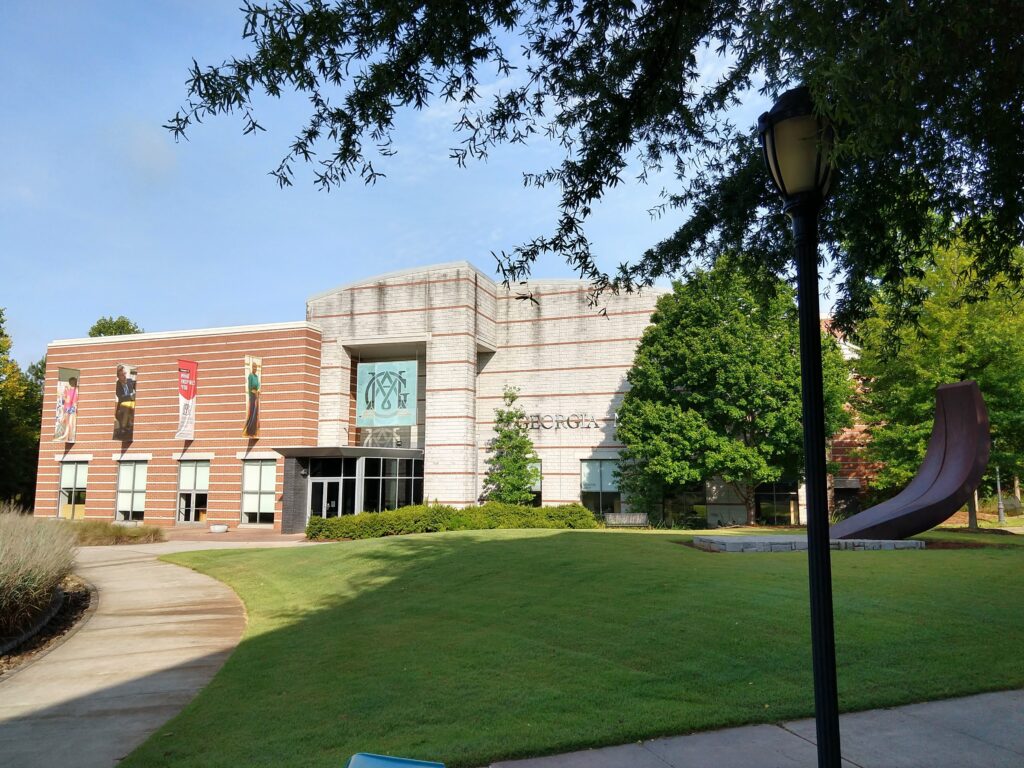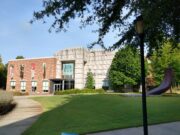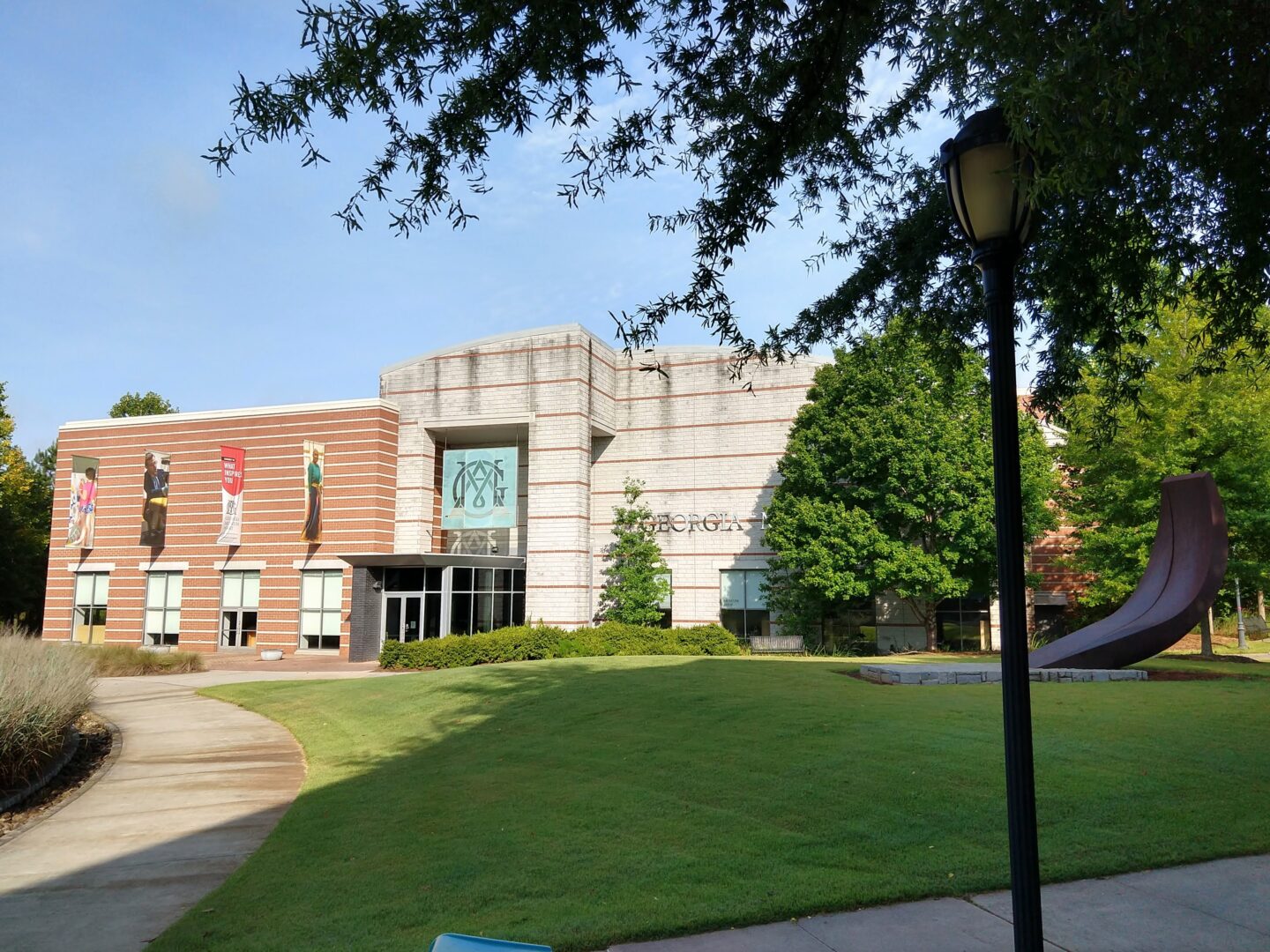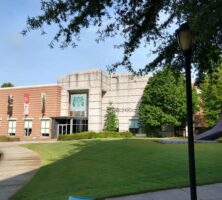The Georgia Museum of Art, on the campus of the University of Georgia, in Athens, is both an academic museum and the official art museum of the state of Georgia. The permanent collection consists of American paintings, primarily of the nineteenth and twentieth century; American, European, and Asian works on paper; the Samuel H. Kress Study Collection of Italian Renaissance paintings; and growing collections of southern decorative arts and Asian art.

Photograph by Katie Korth
The museum opened to the public in 1948 in the basement of an old library at the University of Georgia, and by 2011 the museum occupied a contemporary building in the university’s Performing and Visual Arts Complex. There, nearly 82,000 square feet house more than 8,000 objects in the museum’s permanent collection, as well as gallery space for temporary exhibitions and classrooms.
Much of the museum’s collection of American paintings was donated by Alfred Heber Holbrook, in memory of his first wife, Eva Underhill Holbrook. Included in this collection are works by such luminaries as Frank Weston Benson, William Merritt Chase, Stuart Davis, Arthur Dove, Childe Hassam, Winslow Homer, Jacob Lawrence, Georgia O’Keeffe, and Theodore Robinson. Over the years it has been impossible to separate the history of the museum from the story of Holbrook’s generosity.
Holbrook retired from an active New York law practice at the age of seventy. He began a personal quest to learn about the world of art, an interest piqued by his passion for visiting museums. In his retirement he was determined to study art in a gentle southern climate. A trip to Athens in the mid-1940s led to his introduction to Lamar Dodd, head of the university’s art department. The two became friends and shared a joint vision of enriching the visual arts environment in Georgia. Holbrook, clad in a knee-length pink artist’s smock with pipe in hand, attended art classes at the university. The Georgia Museum of Art was founded in 1945, and Holbrook became its first director and one of the university’s and the state’s most beloved citizens. Holbrook continued to serve as the museum’s director past his ninetieth birthday.
Under the leadership of succeeding directors, numerous museum exhibitions have traveled to national and international venues. When the 1994 exhibition Adriaen van Ostade: Etchings of Peasant Life in Holland’s Golden Age was shown at the Rembrandt House in Amsterdam, the catalog quickly sold out, becoming a text for the study of seventeenth-century Dutch printmaking in classrooms across the country. This exhibition also reflected the importance of prints and drawings in the programming of the museum, which houses one of the finest collections of works on paper in the Southeast. The collection includes prints by old masters, Parisian prints of the 1890s, and American prints and drawings of the early twentieth century.
Exhibitions from such international museums as the National Gallery of Scotland, the Palazzo Venezia in Rome, the Rembrandt House, and the San Carlos National Museum in Mexico City have all been displayed in the galleries of the museum. The museum also offers traveling exhibitions formed from its permanent collection to other museums and art institutes around Georgia and the Southeast.
Since the early 1970s the Friends of the Museum, a support group of more than 1,200 members, has hosted fundraisers and openings for exhibitions and has sponsored exhibitions and educational programs at the museum. In 2000 the Henry D. Green Center for the Study of the Decorative Arts opened at the museum, and two years later the Pierre Daura Center, dedicated to the exhibition and study of the Catalan American artist Pierre Daura, was established. In 2005 the museum received the Southeastern Museum Conference’s Exhibition Award of Excellence for the exhibition Classic Ground: Mid-19th Century American Painting and the Italian Encounter.
The museum broke ground in 2009 on a major new expansion; additions included galleries to showcase the permanent collection, the outdoor Jane and Harry Willson Sculpture Garden, the Study Centers in the Humanities, and an education wing. Closed to the public during the renovation, the museum reopened in January 2011 with a ribbon-cutting ceremony and a slate of special events.






